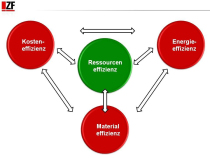Ceram Provides Technical Authorship for Construction Products Resource Efficiency Action Plans (REAPs)
Ceram, the international materials technology company, provided the technical authorship for the recently published ‘Clay Bricks and Clay Blocks’ and ‘Precast Concrete’ Resource Efficiency Action Plans (REAPs).
The ‘Clay Bricks and Clay Blocks’ and ‘Precast Concrete’ REAPs are a result of several stakeholder workshops where potential resource efficiency measures and opportunities were identified and reviewed. The workshops brought together representatives from all parts of the supply chain, including those involved in the production of products and their distribution, installation, recycling, reprocessing and disposal.
A series of REAPs have been produced since 2008; the ‘Clay Bricks and Clay Blocks’ and ‘Precast Concrete’ plans are the first to cover “heavy weight” construction materials. Historically, REAPs have focused on waste minimisation, the ‘Clay Bricks and Clay Blocks’ and ‘Precast Concrete’ REAPs are the first to address all aspects of resource efficiency within the supply chain, including: waste, water, carbon (energy usage and emissions), materials (primary raw materials and secondary/recycled materials) and biodiversity.
The REAPs provide a framework towards reducing the overall environmental impact of these construction products, and share the sustainability objectives and policies of the Green Construction Board (GCB), Construction 2025 Industry Strategy, Construction Products Association (CPA) and Government.
Funded by the Waste and Resources Action Programme (WRAP), the technical authorship of the REAPs was undertaken on behalf the Brick Development Association (BDA) and British Precast Concrete Federation (part of the Mineral Product Association (MPA), by Ceram.
The REAPs technical author, Dr Andrew Smith, Head of Sustainability and Construction Materials at Ceram, commented:
“For the first time, the three main heavy weight construction products, clay bricks, precast concrete and ready-mix concrete (the ‘Ready-Mix Concrete’ REAP is to be published shortly), have come together with a shared common objective, that of maximising Resource Efficiency.
“Not only do the REAPs provide a framework for continual improvement in environmental and sustainability terms, but they also have an underlying business benefit. Using your resources efficiently can have significant impacts on your bottom line. It’s important to maintain the “value”, both actual and inherent, throughout the life cycle of these construction materials, not least at their “end of life”. If we are to truly embrace the “circular economy”, demolition sites will become just as valuable as quarries in supplying both reusable and recycled construction materials.”
Download the free ‘Clay Bricks and Clay Blocks’ and ‘Precast Concrete’ REAPs at www.ceram.com/reap .




